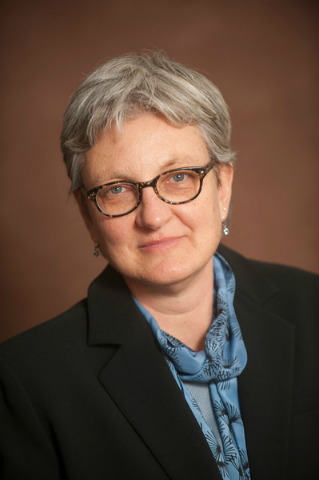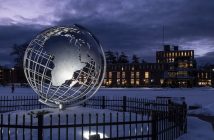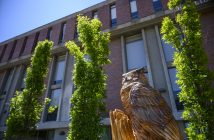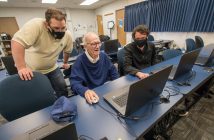You could confuse the grainy construction photo with a still from AMC’s Mad Men—the starched white shirts and narrow ties, the solid color overcoats, the wool fedoras. You’d be right about the time period: the photo was shot in 1969, the year that serves as the setting for the seventh season of the series. That’s how long it’s been since Westfield State University broke ground on Wilson Hall, which opened in 1972 and was then our newest academic building.
This summer, construction equipment is once again moving into position next to Wilson Hall, and while the formal groundbreaking ceremony won’t be held until Sept. 18, work on our new three-story, 54,000-square-foot science building is officially underway. The new building will house state-of-the-art science laboratories, a suite of simulation labs for our nursing program and a technology-rich, interactive classroom that will serve multiple functions, including functioning as a trading floor for courses in finance.
Connected to Wilson Hall by a dynamic space designed to foster informal interaction and collaboration, the new building will offer technically advanced teaching environments, research spaces for both students and faculty and informal, light-filled study spaces. Once the new laboratories are operational, much of Wilson Hall will be renovated, providing the departments housed in Wilson with new academic office suites and classrooms. Placement of the LEED-certified building adjacent to Wilson Hall will create a new academic quad, bisected by a pedestrian corridor that will create a new gateway to the campus.
The new building will serve as a tangible manifestation of Westfield State’s commitment to the STEM disciplines. Westfield State University has always prided itself on its small class sizes and the community-like feel of campus, and that’s not going to change. We aren’t planning a surge in enrollment and continue to flourish in areas the University is known for, including Education and Criminal Justice.
New laboratory and research spaces will strengthen our already thriving STEM programs. biology and environmental science are among the University’s fastest-growing majors. Our Westfield River Environmental Center is active in the region and operates in a productive collaboration with the Westfield River Wild and Scenic Advisory Committee. Westfield State also houses staff from the National Park Service and Massachusetts Department of Fish and Game’s Division of Ecological Restoration in offices adjacent to the Biology and Environmental Science departments.
The Nursing and Allied Health Department graduated its first class of nurses this spring, many of whom completed clinical and community service work in Guatemala at local orphanages. The department received full accreditation in May from the Commission on Collegiate Nursing Education.
The Math Department’s Introductory Actuarial Program was recently recognized by the Society of Actuaries and is one of only five official programs in Massachusetts. The department’s renowned “Discovering the Art of Mathematics,” supported by grants received from the National Science Foundation, provides a revolutionary approach to teaching mathematics for the liberal arts.
As the title of the Math Department project suggests, Westfield State is committed not just to STEM, but to STEAM. The expansion of our science and technology facilities will support programs grounded in the liberal arts that teach the flexible-thinking, risk-taking and creative problem-solving skills needed to solve Massachusetts’ most complex and pressing challenges – from healthcare to urban revitalization to climate change. As Westfield State concludes its 175th anniversary celebration, we look forward to continuing a long tradition of fostering academic success and innovation across the disciplines, including science, technology, mathematics and the arts.




